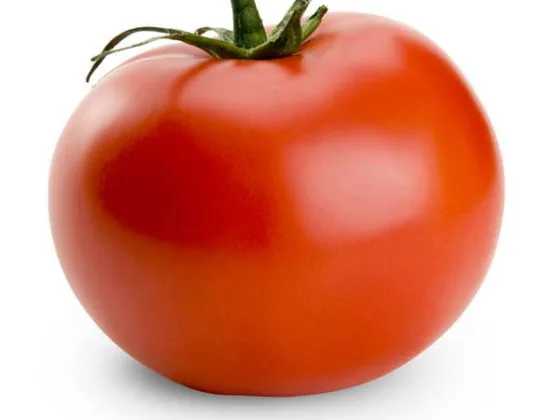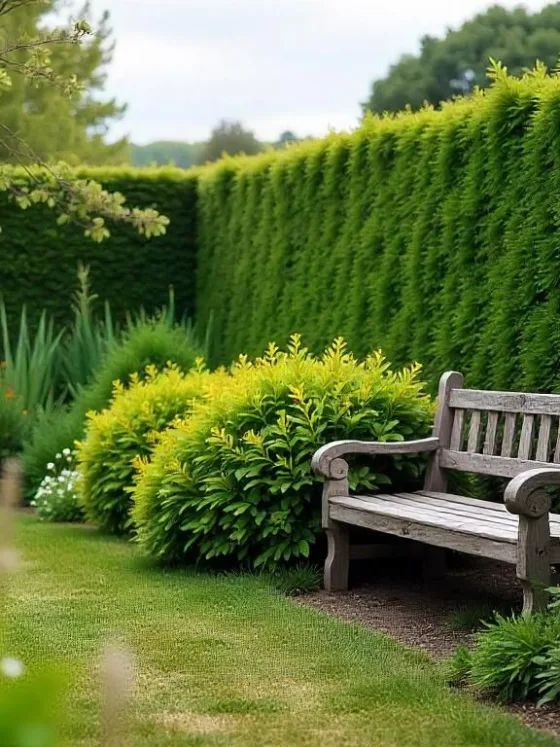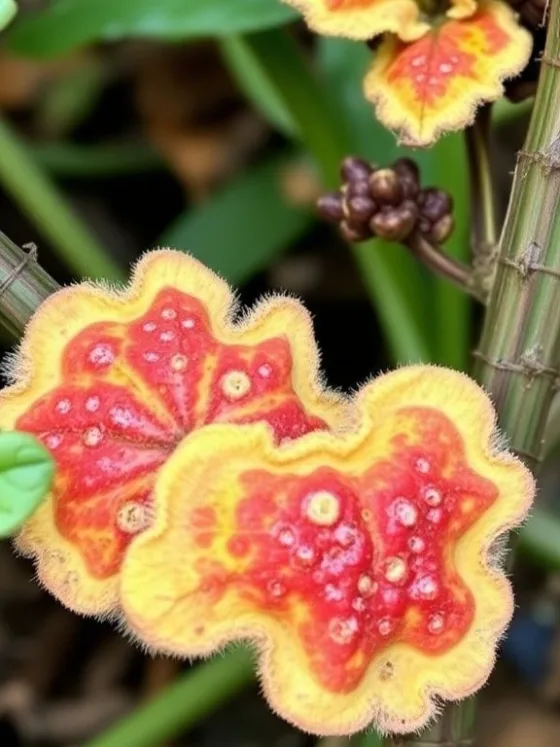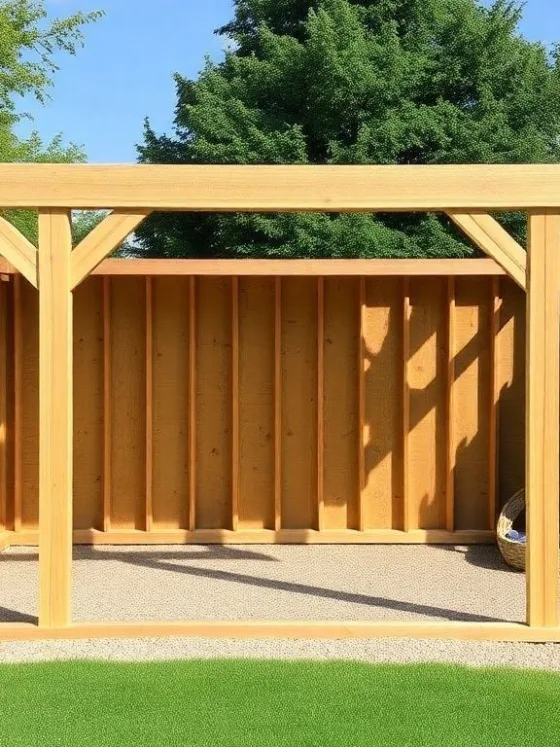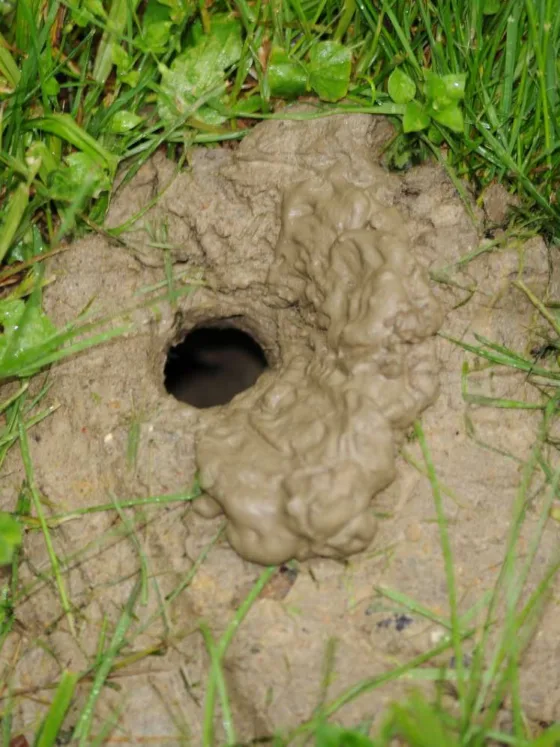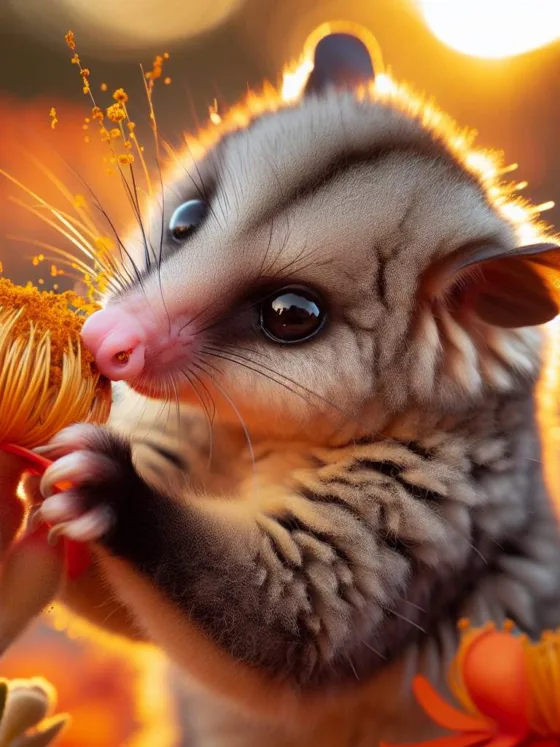Table of Contents Show
Color is one of the fundamental landscape attributes for creating interest, and it’s hard to miss the critical role it plays in our yards and gardens.
We immediately notice a brilliant pink flowering crab in an otherwise green landscape, our eyes drawn to the bright flower colors in stark contrast to the uniform backdrop.
So do garish pink roses and purple irises also draw us in for a closer inspection.
Our response to color is deep and primal, and our reaction is emotional and resonant.
That’s why we seek to bring color into our landscapes by every means possible.

Plants are the fundamental element of our outdoor living spaces, and so we generally turn to them to provide color.
But vibrant color in plants is usually fleeting, as the flowers arrive and just as quickly fade away.
Oftentimes, we find ourselves looking for interesting colors that endure beyond just a few weeks of bloom, and yet most plants offer us only uninspiring shades of green for the balance of the growing season.
Well, nature has provided us with a solution to our call for lasting color.
Thanks to a quirk of genetics called “variegation”, we have plants with colorful foliage at our disposal to use where enduring color is called for.
So what is variegation, and how do we use it in our yards and gardens?
The Amazing Chemistry Behind Variegation
Variegation is defined as the presence of two or more colors on one leaf of a plant.
Most often, it’s a visible discoloration in the leaves of a particular species of the plant away from their “normal” shade of green, plus the original green itself.
It is caused by a genetic mutation that changes the pigmentation of the leaves of plants.
It all goes back to chlorophyll, a biochemical found in the leaves of most common plants which is critical to the process of photosynthesis.
This essential chemical leverages the energy of sunlight to convert carbon dioxide into sugars, which the plant then uses for its metabolic processes and growth.
Without the functions provided by chlorophyll, plants would eventually die.
Chlorophyll is green, and it’s what makes most of the leaves of our plant world various shades of green.
But genetic mutations can occur which change the amounts of chlorophyll in the leaves.
When the chlorophyll is removed from part of the leaves, that part appears yellow, thanks to a second remaining group of chemicals called xanthophylls which have a yellow pigmentation to them.
When the xanthophylls are also removed from the same part of the leaf, that part will then appear white.
Clearly, the absence of differing quantities of these two chemicals will give a range of colors of variegation from pure white to cream, butter yellow and yellow, to gold and light green.
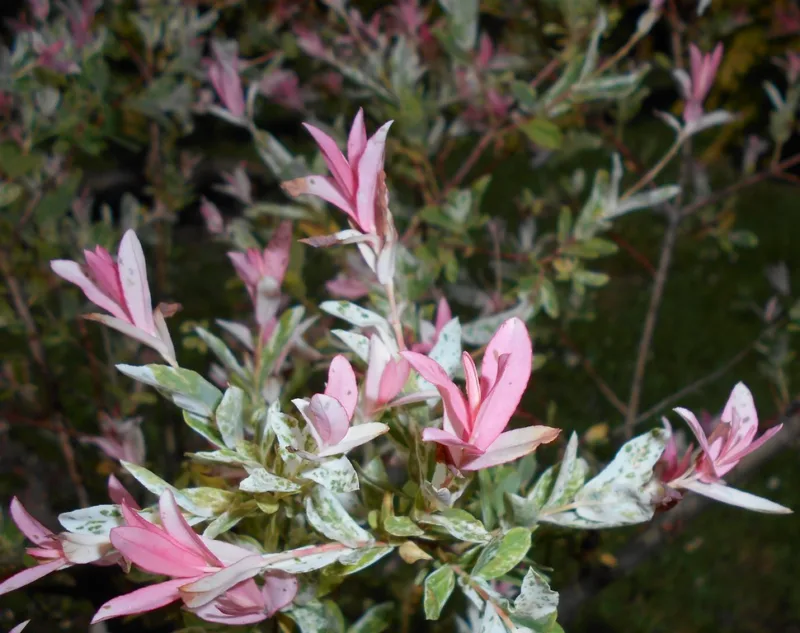
If the entire leaf has reduced chlorophyll, the xanthophylls will still convert some of the sun’s energy, and that is why gold-leaved plants exist and grow happily.
However, plants with neither chlorophyll nor xanthophylls aren’t capable of processing sunlight at all, and that’s why entirely white-leaved plants do not exist. Now you know!
What makes the variegation even more pronounced is the location of these mutations on the leaf.
Most often, they occur along the edges, with a solid green color in the middle.
In some special cases, for example with certain hosta and wintercreeper euonymus varieties, the effect is reversed, with the green on the leaf margins and the white or yellow variegation in the center.
Other beautiful variations include streaking (certain hostas), marbling (certain dogwoods), spots (lungwort), and colored veins (some flowering crabs).
Each of these adds a different dynamic to the presentation when viewed both close up and from a distance.
Finally, some plants may also exhibit a secondary pink tinge to the primary variegation, for example with Arctic Beauty kiwi, chameleon plant, and tricolor willow.
This is thanks to the presence of yet another group of chemicals, anthocyanins, which tend to color red, purple, or pink.
These are the chemicals that turn the leaves of red maples and other trees and shrubs red in fall, once the chlorophyll has broken down and “left the building”.
Using Variegation In The Garden And Landscape
Enough for our biochemistry lesson; let’s wander into the yard to see how variegation can be put to work for our landscapes.
Green is the fundamental color of the growing season in our northern yards and gardens, forming the backdrop against which we as the designers create interest using the colors, textures, and forms of plants and hard elements.

We leverage the green in our plants to play this vital role, a foil to the other colors that we are highlighting.
But the converse is also true; anything green automatically becomes part of the backdrop, part of the scenery against which the performances are staged.
And since the foliage of most plants is naturally green, they tend to blend into the background, save for their ornamental performances.
Therefore, in order to stand out, we seek plants with colors that diverge from green as our accents, colors that wander outwards to red, yellow, and white in the hotter ranges and recede inwards to blue and purple in the cooler ranges.
Most of the color performance in our landscapes is achieved through flowers, simply because they are so colorful, vibrant, abundant, and transient.
We use this transience to our advantage, creating a dynamic range of interest that comes and goes across the growing season.
But flowers are often too fleeting, at best individually lasting for only one or two weeks at a time. What if we want to maintain interest over a longer period?
Foliage is an obvious candidate if it can provide colors other than green.
There are of course a number of varieties of plants with non-green solid-colored foliage that can serve this purpose.
However, these tend to be a little too blunt in the landscape, and the coloration is almost always either a sharp red or burgundy or a hot gold, both of which can rapidly overwhelm a composition.
Sure, they have their place, but they are often too far to the extreme of the effect we are looking to create.
But variegated foliage introduces a more elegant and refined effect into the landscape, with the colors softened by the presence of the green.
Variegation primarily occurs in either shades of white, or shades of yellow, which can range from bright gold to a softer lemon yellow, and to butter yellow and cream as the coloration progresses to white.
And let’s not forget those hints of pink that further add a touch of daring to the scene!
At its heart, variegation creates interest by standing apart from the background, so it should be used as an element of interest would be.
Primarily, this means that variegated plants make excellent accents, especially larger forms such as trees and large shrubs.
When they additionally provide a showy flowering performance at their peak, they become some of the most desirable plants in our landscapes.
As such, they should always be solitary in their purpose and never grouped, save for the smaller shrubs which are grouped for increased effect only in larger landscapes.
At the smaller end of the scale, we use variegation in the garden to create an element of interest that endures across the seasons, while the colors of the flowers come and go.
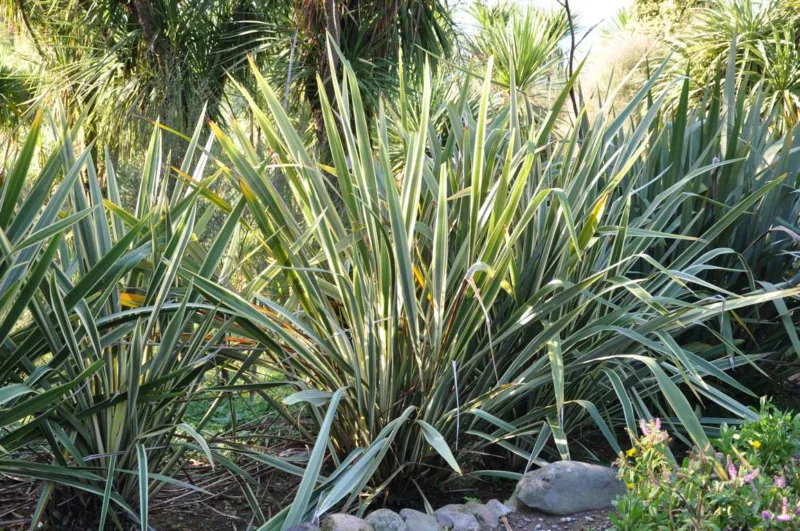
Think of it as a kind of “balanced interest”, lending stability and endurance while at the same time not receding into the background.
Variegated plants are like a mid-ground level of interest somewhere between the showy accents and the subdued background, a part of the framework but clearly distinct.
Scale is the key here; one large variegated shrub is enough to add variety to a corner of the garden backdrop, while a massing of variegated perennials can serve the same purpose at the front of the border.
Just don’t take it to extremes.
A garden consisting entirely of variegated plants would look confusing and would have no focal point at all, whereas a smaller yard with five massive variegated trees would throw the entire perspective into chaos.
The artist, uses variegation judiciously, throwing splashes of controlled color here and there to add life to the composition.
Remember, the less frequently you use it, the more of an accent it will be.
A Selection Of The Finest Variegated Plants
Of all the plants we miss in our northern landscapes, my biggest lament is the lack of hardy variegated trees.
But thanks to some exciting new developments, we are starting to see the emergence of variegated trees into the northern repertoire.
A notable introduction for homeowners in zone 3 is Golden Eclipse Japanese tree lilac (Syringa reticulata ‘Golden Eclipse’), which features subtle gold to chartreuse-variegated foliage all summer long to accompany its showy white spires of fragrant flowers in June.
For those in zone 4, the finest variegated tree is surely the Harlequin Norway maple (Acer platanoides ‘Drummondii’), whose creamy white-variegated leaves can be seen from a mile away on a mature tree.
There’s also the Harlequin ash (Fraxinus pennsylvanica ‘Harlequin’), which has beautiful white-edged leaves, although this tree is not exceptionally vigorous in my experience.
But unlike trees, when it comes to shrubs, northerners are blessed with a wide range of choices, starting with the hardy noble dogwood (Cornus spp.).

The Tatarian form of this shrub (C. alba) has produced some of the finest variegated plants available, including the silver variegated dogwood (C. alba ‘Elegantissima’) and its even finer and more compact sister, Ivory Halo dogwood (C. alba ‘Bailhalo’), both of which show very prominent white margins on the leaves.
And that’s not all – there’s an exceptional golden variegated form as well (C. alba ‘Gouchaultii’), which although a little shrubbier than the silver-edged varieties, is a beacon for northern landscapes.
Besides dogwoods, you’ll want to experience the beautiful Madonna elder (Sambucus nigra ‘Madonna’), with bright golden variegation that fades to cream in summer, Carol Mackie daphne (Daphne x burkwoodii ‘Carol Mackie’) whose white-rimmed narrow leaves are far outdone by the insanely fragrant shell pink flowers in spring, and the tricolor willow (Salix integra ‘Albomaculata’), which also goes by the name of Haukro Nishiki, whose white and pink variegated leaves will have you thinking this plant is actually in bloom!
We even now have variegated evergreens, just to ice the cake! Check out the Sherwood Frost white cedar or arborvitae (Thuja occidentalis ‘Sherwood Frost’) with its cream-flecked scales, or the variegated savin juniper (Juniperus sabina ‘Variegata’) with the same, both of which are quite hardy for northern yards.
And for the collector, you have to see the Dragon’s Eye pine (Pinus densiflora ‘Oculus Draconis’) to believe it – looking at the twigs end-on, you can actually see how this plant got its name!
Perennials And Grasses, Too!
There are all kinds of garden perennials with variegated foliage, too many to list, so I’ll just give you a few of my favorites.

In my humble opinion, the very finest variegated perennial, and probably the best variegated plant ever discovered, is the Illumination periwinkle (Vinca minor ‘Illuminaton’).
This vigorous groundcover may exhibit the brightest gold variegation I’ve ever seen, and trust me, I’ve looked! The variegation contrasts wonderfully with the very dark green foliage, and the sapphire blue star flowers just scream out against the gold!
Other worthy variegated groundcovers include cultivars of the aggressive yet beautiful dead nettle (Lamium maculatum cv.) for shady sites, and tricolor sedum (Sedum spurium ‘Tricolor’) for hot, sunny sites.
It seems that when it comes to variegation in perennials, the shade lovers far outnumber the sun lovers, a fact that creative gardeners will really love, because shady sites are desperate for some color, and flowering performances tend to be somewhat reserved in shade.
That’s where the myriad selections of variegated hostas can steal the show, with any possible combination of blue, gray, dark to light green, and gold foliage variegated with margins of gold, cream or pure white.
For the gardener who doesn’t like to follow the masses, there’s the unfortunately-named lungwort and it’s stunning cultivars (Pulmonaria spp.), which feature narrow leaves spotted and splashed in silver.
For sunny spots, let me recommend the amazingly brilliant Golden Alexander loosestrife (Lysimachia punctata ‘Golden Alexander’), with its creamy variegated foliage and complementary hot gold flowers.
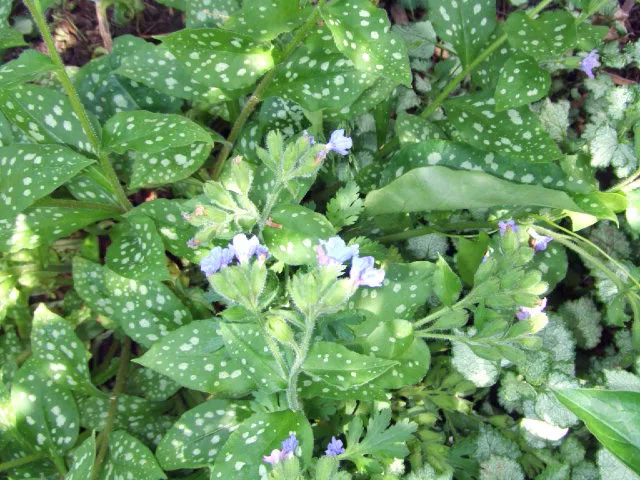
Another absolute gem that I wouldn’t live without is the variegated sweet iris (Iris pallida ‘Variegata’), whose sword-shaped gray green leaves are splashed with narrow bands of white for an unmistakable impact in the landscape.
There’s also a gold-variegated form available (I. pallida ‘Aureovariegata’) which is a little harder to obtain.
And if you like large, aggressive plants, give the golden-tinged Oriental Limelight artemisia (Artemisia vulgaris ‘Oriental Limelight’) a whirl!
Heck, there are even variegated grasses, if you can believe it! Check out my personal favorite, golden variegated moor grass (Molinia caerulea ‘Variegata’), which is surprisingly effective in masses in a smaller garden, and the much larger and much louder variegated Japanese maiden grass (Miscanthus sinensis ‘Zebrinus’), which you simply can’t miss (and really can’t place in your garden unless you’re blessed with a lot of spare real estate!).
So go ahead, bring a little color into your landscapes that endure over the entire growing season. Welcome a variegated plant or two into your gardens today!


